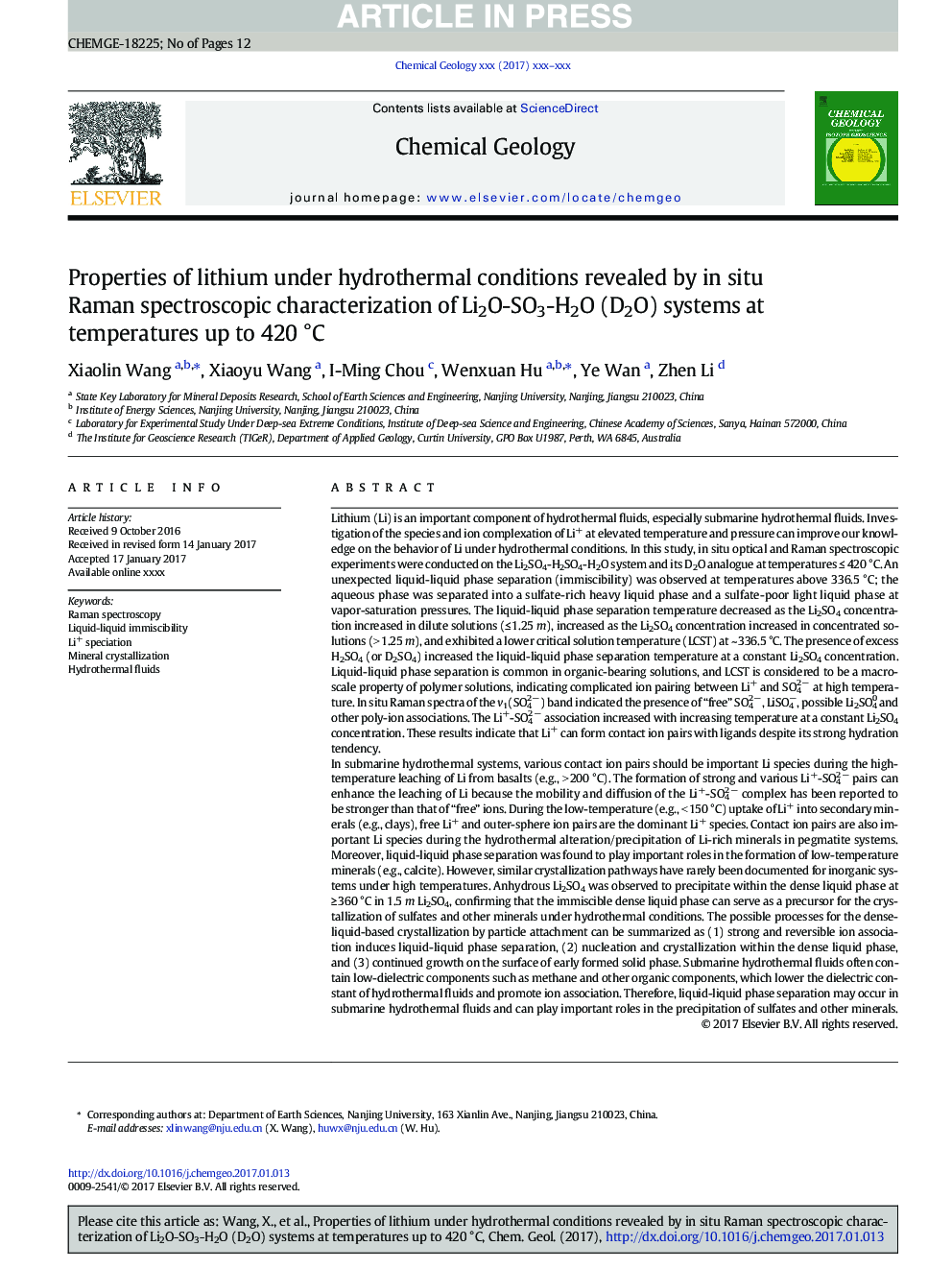| Article ID | Journal | Published Year | Pages | File Type |
|---|---|---|---|---|
| 5783045 | Chemical Geology | 2017 | 12 Pages |
Abstract
In submarine hydrothermal systems, various contact ion pairs should be important Li species during the high-temperature leaching of Li from basalts (e.g., > 200 °C). The formation of strong and various Li+-SO42 â pairs can enhance the leaching of Li because the mobility and diffusion of the Li+-SO42 â complex has been reported to be stronger than that of “free” ions. During the low-temperature (e.g., < 150 °C) uptake of Li+ into secondary minerals (e.g., clays), free Li+ and outer-sphere ion pairs are the dominant Li+ species. Contact ion pairs are also important Li species during the hydrothermal alteration/precipitation of Li-rich minerals in pegmatite systems. Moreover, liquid-liquid phase separation was found to play important roles in the formation of low-temperature minerals (e.g., calcite). However, similar crystallization pathways have rarely been documented for inorganic systems under high temperatures. Anhydrous Li2SO4 was observed to precipitate within the dense liquid phase at â¥Â 360 °C in 1.5 m Li2SO4, confirming that the immiscible dense liquid phase can serve as a precursor for the crystallization of sulfates and other minerals under hydrothermal conditions. The possible processes for the dense-liquid-based crystallization by particle attachment can be summarized as (1) strong and reversible ion association induces liquid-liquid phase separation, (2) nucleation and crystallization within the dense liquid phase, and (3) continued growth on the surface of early formed solid phase. Submarine hydrothermal fluids often contain low-dielectric components such as methane and other organic components, which lower the dielectric constant of hydrothermal fluids and promote ion association. Therefore, liquid-liquid phase separation may occur in submarine hydrothermal fluids and can play important roles in the precipitation of sulfates and other minerals.
Related Topics
Physical Sciences and Engineering
Earth and Planetary Sciences
Geochemistry and Petrology
Authors
Xiaolin Wang, Xiaoyu Wang, I-Ming Chou, Wenxuan Hu, Ye Wan, Zhen Li,
